ARCHELON has established a unique hospital for sea turtles in Glyfada for the past 30 years
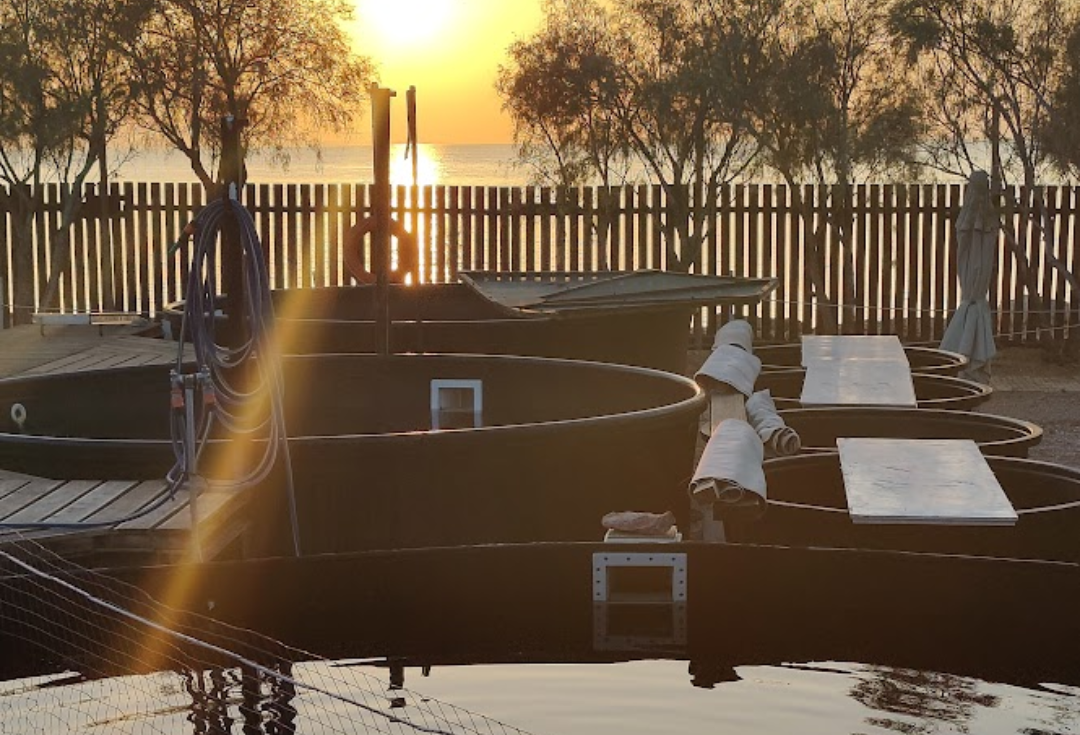
ARCHELON’s sea turtle hospital in Glyfada is the largest in the Mediterranean, having hosted and rehabilitated over 1,300 injured and sick animals.
- 25/10/2024
- Author: Maria Daifoti
Turtles connected to serum bottles or bandaged are housed in care tanks and rehabilitation tanks featuring specialized environmental enrichment, recovery greenhouses, and even renovated train carriages from the Greek Railways! The hospital for injured and sick turtles established by ARCHELON at the 3rd marina in Glyfada, next to the sea, is certainly not ordinary. Its setting resembles a fairy tale, but it is a modern hospital for sea turtles – the largest in the Mediterranean. Over its 30 years of operation, it has hosted and treated more than 1,300 injured and sick animals, becoming a magnet for thousands of visitors and volunteers from around the world.
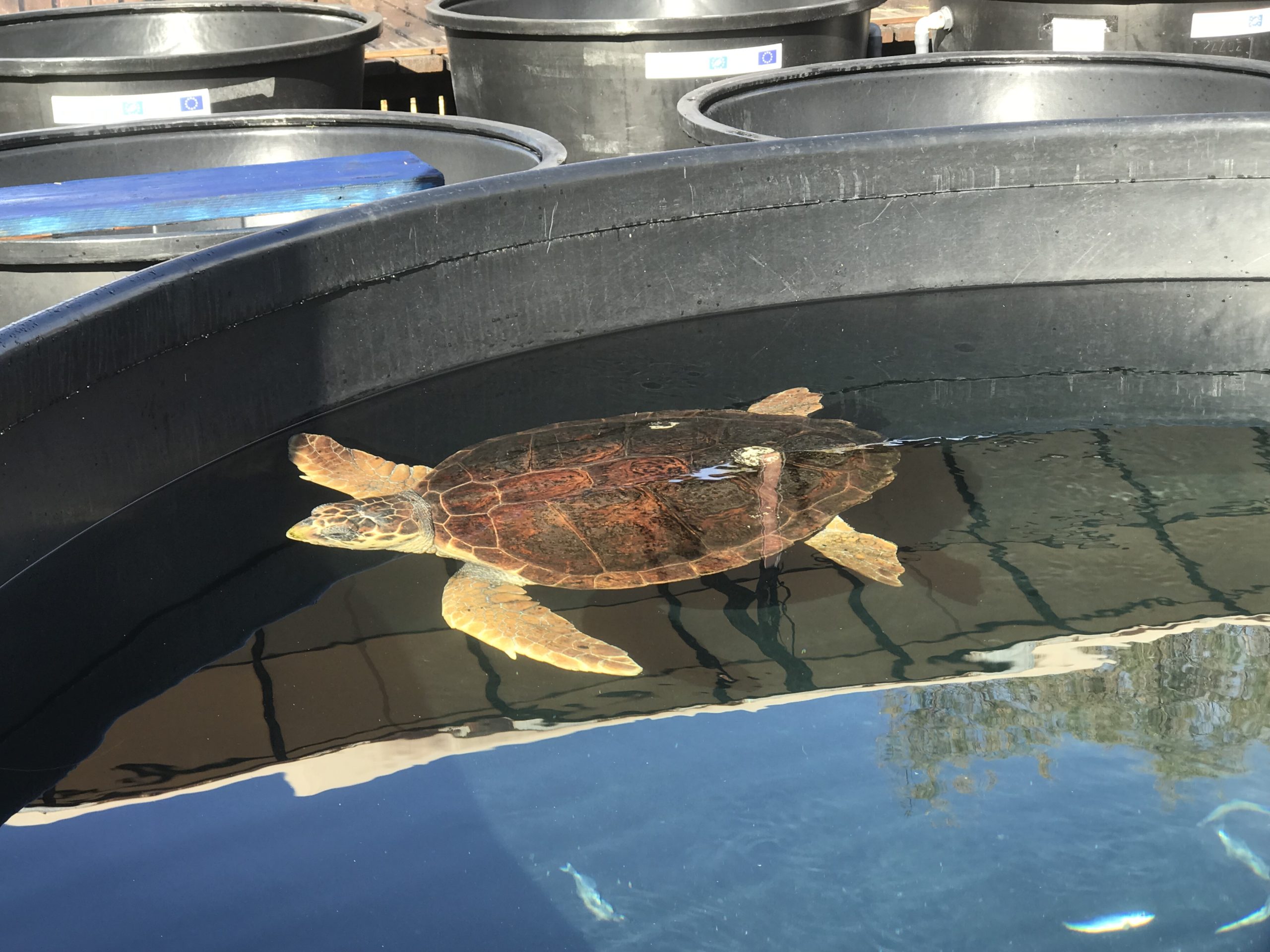
It was in 1994 when ARCHELON, then known as the Association for the Protection of Sea Turtles, successfully established this model Sea Turtle Rescue Center in Glyfada. The need for its creation arose as a natural consequence of the Association’s presence in Greece, as it prompted many of our fellow citizens each year to reach out for guidance and assistance regarding the injured turtles they encountered on the shores or in the sea.
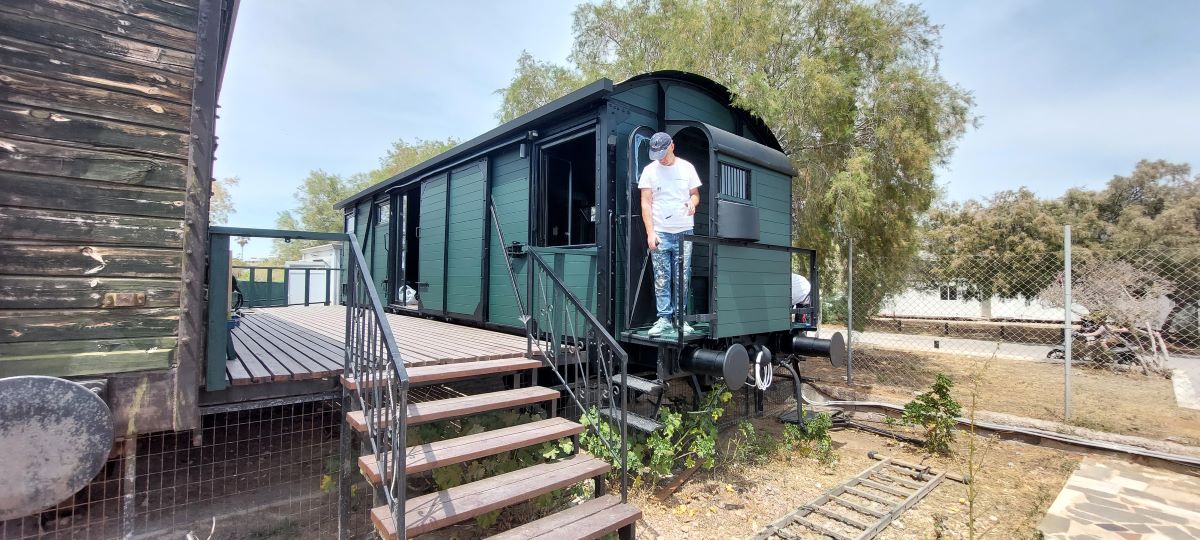
The Center began operations with the crucial support of the then Mayor of Glyfada, Theodoros Spondylidis, who provided the necessary space at the 3rd Marina. The proximity of a marine animal rehabilitation facility to the seawater is vital. However, the volunteers and rescuers of ARCHELON also needed a sheltered area to work and stay overnight close to the injured animals. Therefore, a creative solution had to be found. This came in the form of old train carriages donated to the Association by the Greek Railways (OSE), which added a unique character to the facilities.
“At that time, there were only two train carriages at the Rescue Center and one turtle with a hook in its mouth, inside a children’s plastic pool about 50 centimeters in diameter,” recalls Tom Scott, the first international volunteer at the Rescue Center. “We bathed using a hose, while we had to bring seawater for the turtles in buckets. A significant part of our work involved building and painting the Center to transform it into what it is today. The first carriage was used for environmental education, and the other served as an office, workshop, and dormitory. Soon, we had outdoor tanks and clean water from a pump, and we were all very excited about these changes,” he adds.
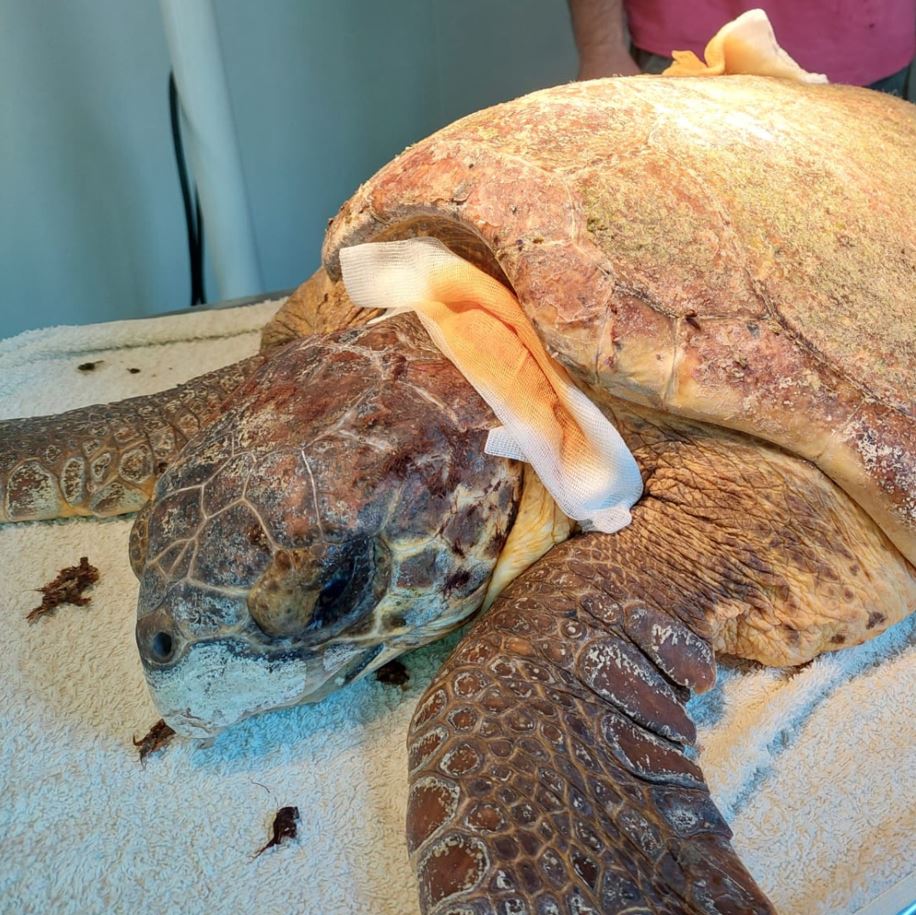
Over the years, the Rescue Center has continued to evolve, innovate, and lead the way in sea turtle rehabilitation. This exemplary facility, now recognized as one of the most significant in the world, was recently licensed and operates as one of the first Wildlife Rehabilitation Centers in our country, thanks to newly established legislation.
Today, at the Glyfada facility, the animals under care are no longer housed in makeshift pools but in 42 specialized rehabilitation and preparation tanks equipped with state-of-the-art pumps that filter, renew, and heat the seawater. As a result, over 1,300 animals have been hosted and received care at the facility.
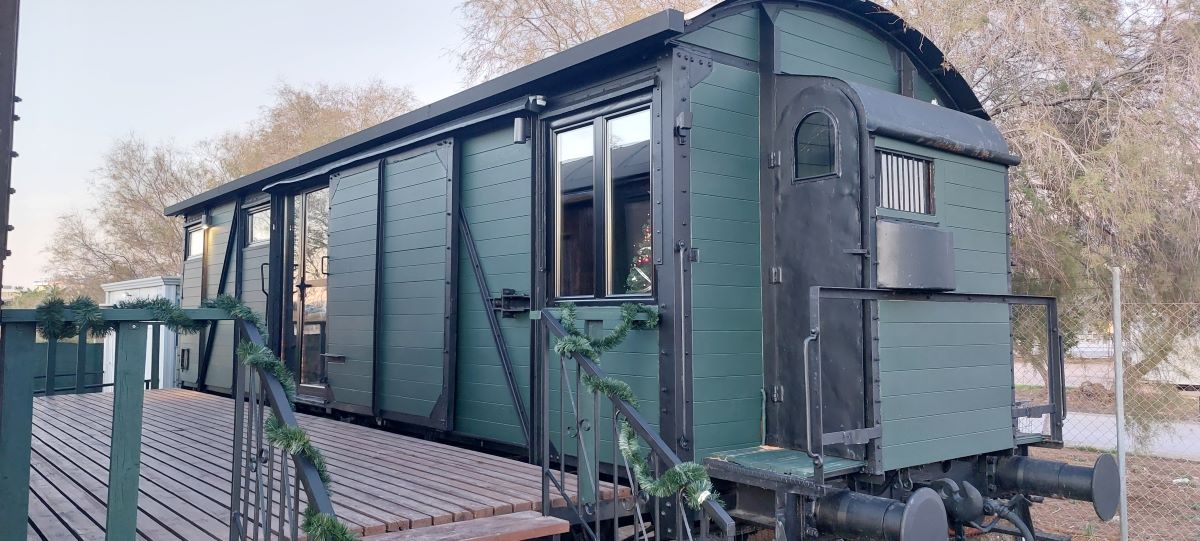
The multi-faceted educational, ecological, emotional, empowering, and entertaining experience offered by tours at the Rescue Center has made it a focal point for schools from all over Attica and visitors from around the world who wish to witness the rescue efforts firsthand and learn about the issues facing our seas. The Center also places great value on the experience gained by volunteers from Greece and many other countries, who assist in educating visitors, caring for the turtles, and participating in the various commendable activities of ARCHELON.
Association for the Protection of Sea Turtles – ARCHELON: The Story of Its Creation
The “Association for the Protection of Sea Turtles” was founded in 1983 (it adopted its current name, “ARCHELON,” in 2008). The first statute of the Association for the protection of sea turtles was signed on November 20, 1983, by 21 individuals, two of whom were its founders, Dimitris and Anna Kremetzi-Margaritouli.
A few years earlier, in the summer of 1977, Dimitris Margaritoulis and his wife, Anna, while vacationing in Zakynthos, first observed the tracks of the Caretta-Caretta turtle on the Daphni beach. Until then, there had been no scientific record of sea turtle nesting in Greece.
Thus, six years after the scientific discovery that Caretta turtles breed in Zakynthos, the non-profit organization “Association for the Protection of Sea Turtles” was established, with the aim of studying and protecting sea turtles and their habitats.
“The turtle at Daphni was a symbolic revelation. I felt that this animal, coming from far away to its nesting beach to lay its eggs, was a ‘message’ from nature, providing us with a significant argument to save the area from chaotic development at the last moment,” Dimitris Margaritoulis stated in an interview with naturanrg.gr and journalist Tania Markoutsaki. “I believe that humanity is completely dependent on Nature—spiritually, physically, and mentally. The sea turtles, with their complex life cycle (they are born on land, make long migrations in the sea following magnetic fields, and return after 30-35 years to the same beach to nest), highlight the fascination of the mechanisms of nature that regulate everything.”
The establishment of the first Research Stations in the Laganas Bay of Zakynthos and the southern Kyparissia Bay took place in 1984 and 1985 in the Laconian Gulf, marking the beginning of systematic long-term programs to record the reproductive activities of the Caretta turtle. Awareness campaigns were initiated, the first measures to prevent construction development behind nesting beaches were established, pilot cooperation programs with fishermen in the Laconian Gulf were created to address turtle mortality, and the Rapid Recognition Program for nesting areas in southern and western Greece began, while new nesting beaches were discovered in Crete.
In 1999, several years after the announcement of joint proposals from environmental organizations and local communities for the creation of a National Marine Park in Zakynthos, the Presidential Decree for its establishment was issued.
In the following years, three Environmental Scientific Stations were created in various locations in Greece. A significant victory was that nearly all important nesting areas in Greece were included in the European network of protected areas, NATURA 2000.
The establishment of a Nature Protection Area in the Kyparissia Bay in 2018 was also a major success for the protection of nesting beaches, where the highest number of breeding Caretta turtles in the Mediterranean has been observed in recent years. Later, at the European Natura 2000 Awards, the Kyparissia program was recognized as one of the best nature protection programs.
A milestone in the history of the Association was, of course, the opening of the Sea Turtle Rescue Center in Glyfada in 1994, which has since hosted over 1,300 turtles and successfully rescued more than 700, which have returned to the sea. The Rescue Center hosts approximately 70 injured or sick sea turtles each year, rescued from Greek coasts and seas. The facility provides care and rehabilitation for the turtles, and from there, their return to the sea is organized.